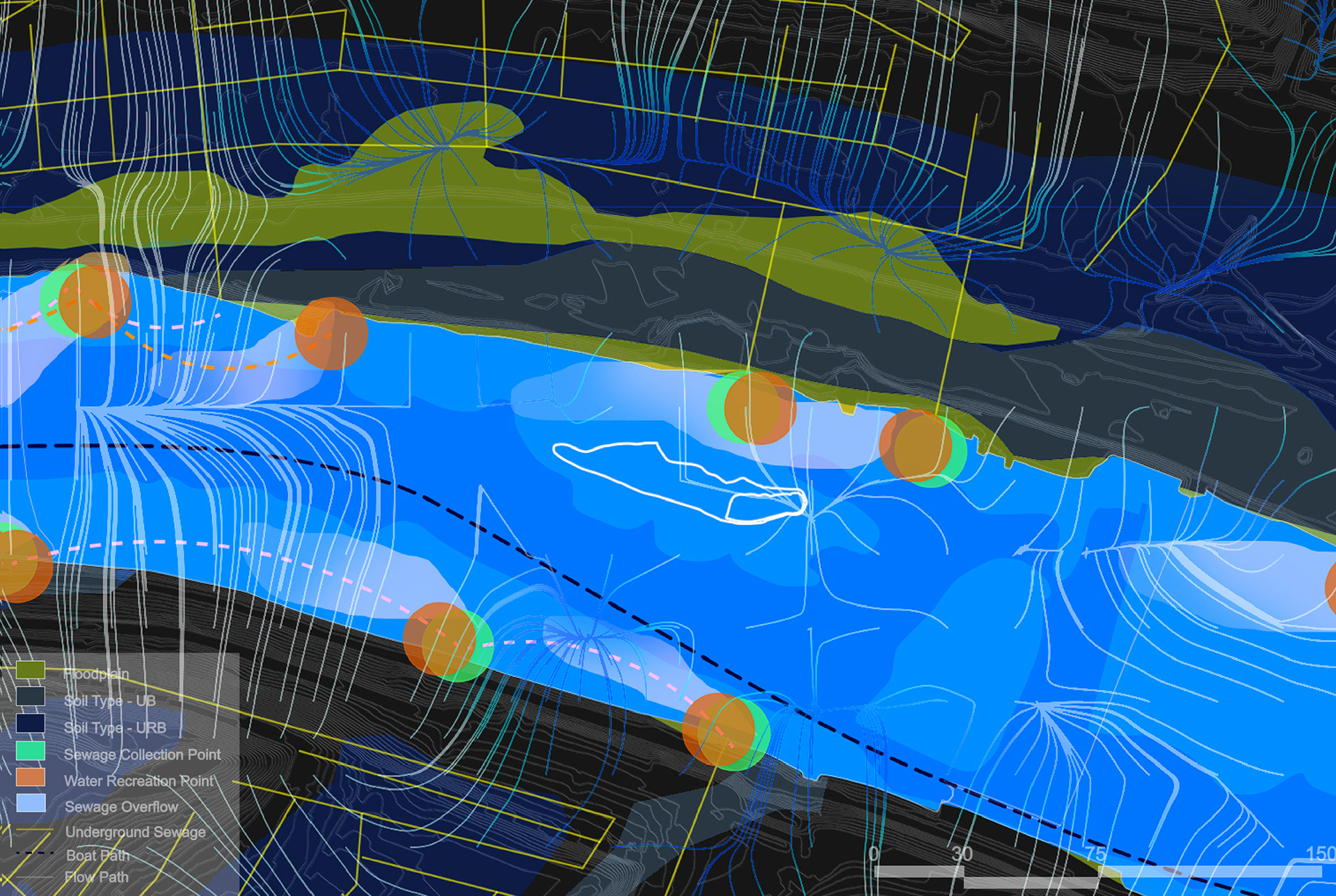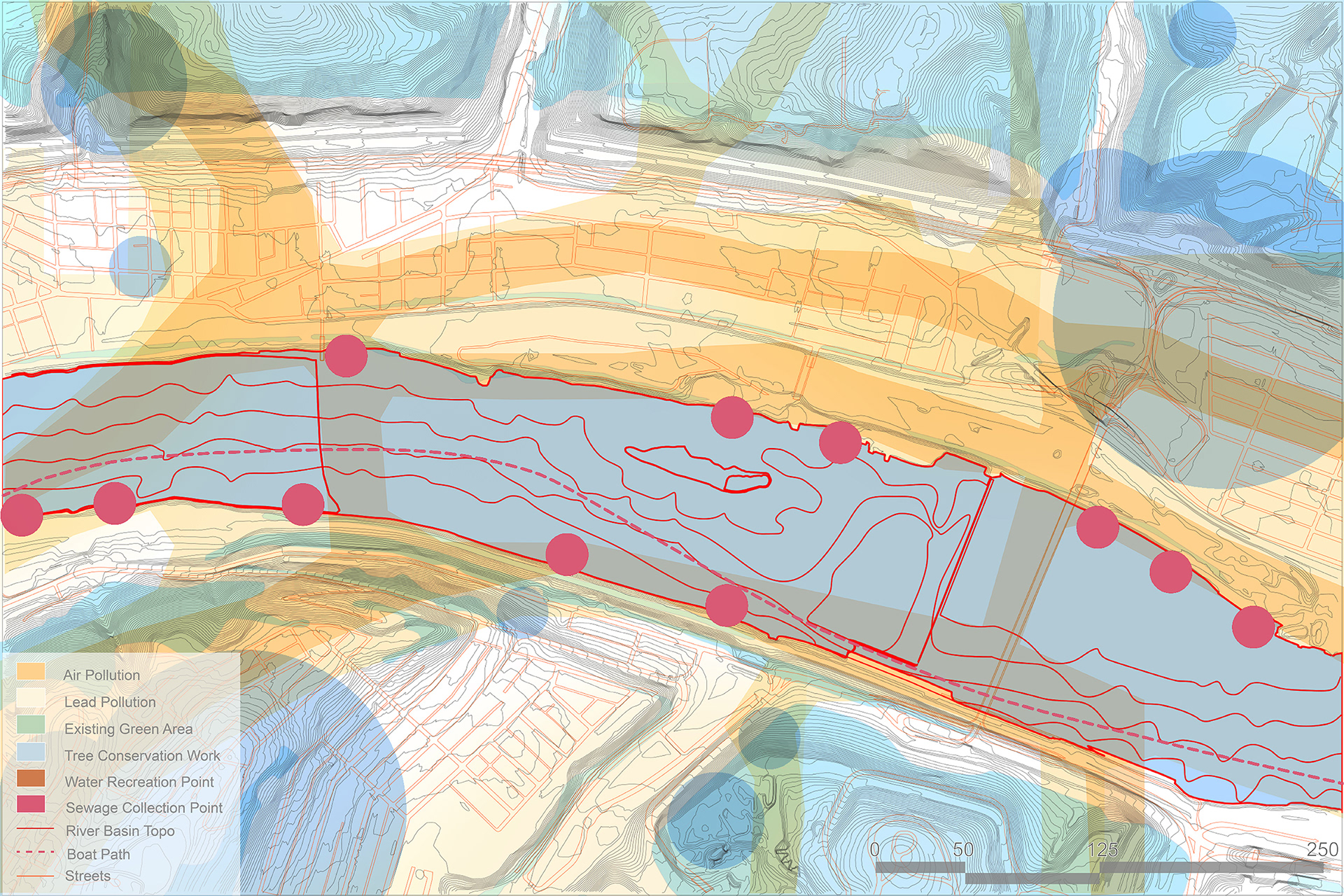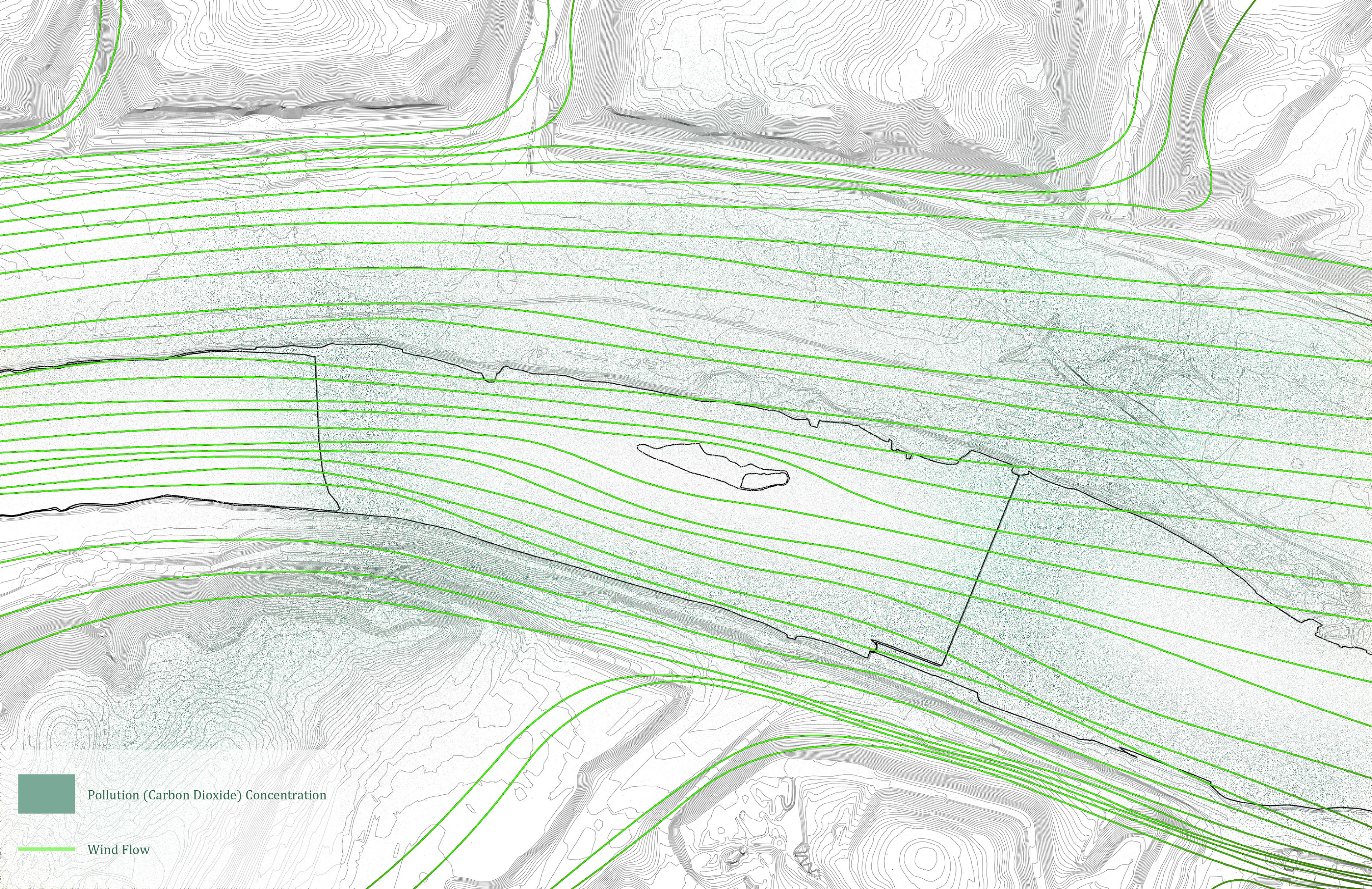2020 | Six Mile Island, Pittsburgh, PA
Instructors: Sarosh Anklesaria, Dana Cupkova
Instructors: Sarosh Anklesaria, Dana Cupkova
This design purposal explores the relationship between environment, form, and feedback. By employing a hybrid system containing both algae bioreactor, rainwater harvesting system, and Bioswale, the mass is able to bridge between human influences and eco-restoration activities. The bridge achieves create a feedback cycle by improving the carbon footprint, generate biofuels and processing waste water. The form of the bridge is derived from the existing conditions of the site, such as the location polluted water, the direction of wind and water flow, and sun angle.



Three different types of algae are used in different parts off the bridge. Scenedesmus Obliquus and Chlamydomonas Reinhardtii are raised in the algae bio-reactor on the roof of the bridge. These two types of algae feed on the Carbon Dioxide captured by the bioreactor and generates biofuels, which is then used as a energy source for the programs inside the bridge. Dunaliella is placed in the pods located at the bottom of the bridge, which absorbs the polluted water in the Allengheny River and purifies the water. The purified water is also cycled back and used in the programs inside the bridge. All the products generated from the algae bio-reactor, including biofuels, water, Carbon Dioxide, and excess algae, can be used in the interior programs of the bridge which consist of breweries and restaurants. And to do so a feedback cycle is created that helps to serve the community and at the same time eliminates pollutions caused by humans.

